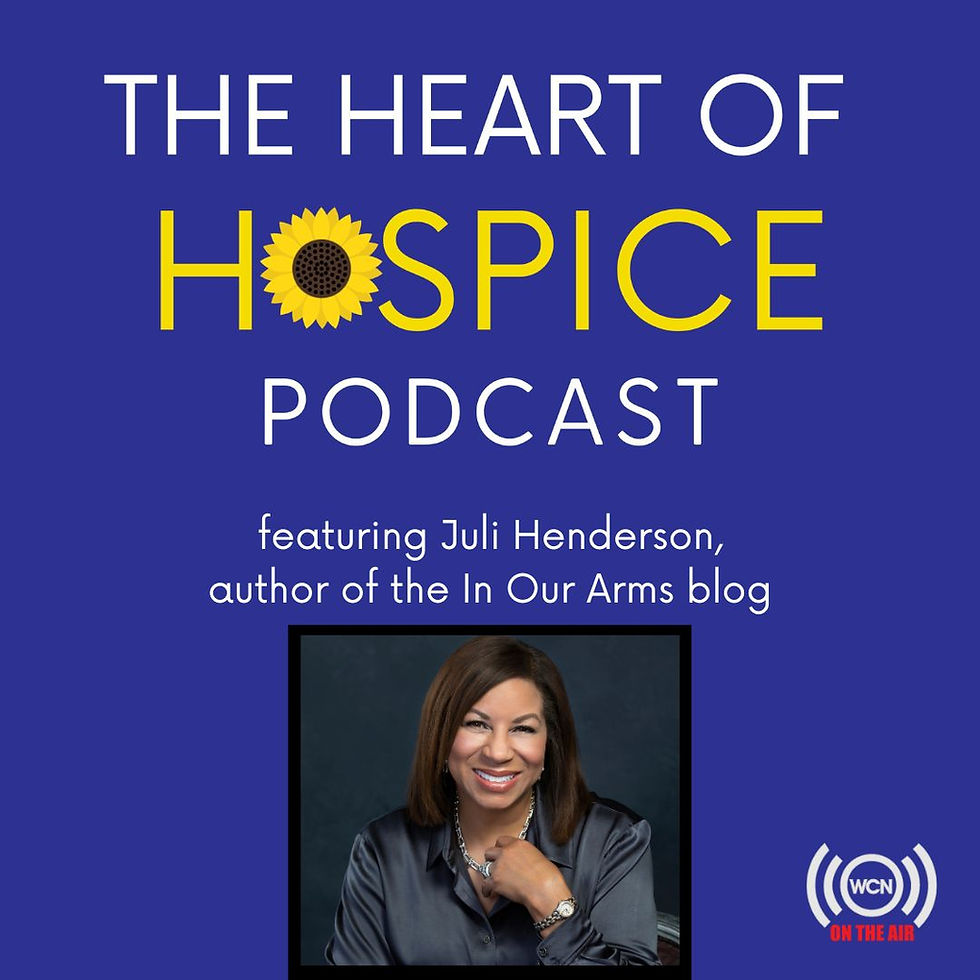Just Stop
- Apr 28, 2019
- 4 min read
No, really. Just stop.
I’d like to stop a habit we have when we talk to patients who aren’t getting any benefit from aggressive treatment any more. It’s what we say when the treatment has maxed out, or the patient can’t tolerate it any more.
“There’s nothing else we can do.”
That one simple sentence sucks all the air out of the room. It removes all the hope, even if there was only one small sliver of hope of a cure. That one negative phrase is imprinted on that patient’s brain, and on the family – forever. That one negative phrase can mean everything to the person who’s undergoing treatment.
It’s time to stop. There are no more treatment options. You don’t have any other choices. It’s time for you to die.
We need to stop saying that. There are millions of words in the English language. Can’t healthcare professionals think of anything better – and more accurate – to say than communicating a concept that crushes our patients and the people they love? Say something else, something that really describes the change of focus our patients need. If aggressive treatment isn’t the best plan, there are other options.
Hospice and palliative care are some of the possible choices. There are medications, therapies, and symptom management measures that hospice teams can provide. But it’s so much more than that. Compassionate contact and empathetic listening are only a few of the tools that end of life professionals have at their disposal.
I don’t think it’s a lack of knowledge on the part of practitioners who tell patients there’s “nothing else we can do“. Maybe they’re trying to convey the true finality of aggressive treatment options, to really drive home the concept so patients begin to internalize the reality of their medical status. Maybe it’s our way of disconnecting. A way to cut the cord quickly so we can send the patients in more appropriate direction. Maybe we just don’t bother to take time to consider the impact on the patient – and the uphill battle we’ve just created for him and for whatever care team that will work with him going forward.
Here’s what it looks like. A patient forms a bond with the care team and undergoes treatment for a serious illness or disease. As his condition stops responding to treatment, he ends up standing on the edge of a high cliff. Then someone from his healthcare team tells him “we’ve got nothing else to help you”.
You just pushed that patient – that human being – off the cliff into a deep chasm. Depression, grief, despair, and hopelessness are going to be his burdens in addition to the illness he’s already got. If there’s a referral for hospice, that new care team is going to lower a ladder into the deep to help that patient climb up.
That patient will have to scratch and claw to climb up to solid ground where he can be cared for in the way he deserves. End of life professionals will guide him, encourage him, and help in every way they can. There’s so much more work that will have to be done to get that patient to a place inside another care team where he can feel safe.
Instead of pushing our patients off the cliff and increasing their suffering, couldn’t we build a bridge to help them transition to hospice and palliative care? If our first thought is always “Do no harm”, can we realize that we harm patients with the thoughtless words we use? They already feel isolated in a body that’s sick.
Are you going to make it better, or are you going to make it worse?
Beginning conversations about end of life care has to start a different way. When a patient receives that harsh notice of “nothing else” and then receives a referral for hospice, what kind of introduction is that? Don’t crush the people in your care and expect any kind of smooth transition into end of life care. It just makes the job of connecting with hospice teams more difficult for the team and for the patients. Healthcare practitioners can talk about changing focus to a more appropriate plan of care. Hospice just happens to be part of it.
Here’s what I know about end of life care. There is always something we can do.
Sure, we bring the meds, the equipment, the oxygen, the supplies, but those are just the basics. We also bring our selves. We’re going to sit with you. We’re going to listen to what you say, and what you can’t say. We’re going to hold you when and if you want it, and provide a caring touch. We’ll comfort your family. We’ll be present to let you know we’re walking alongside as you do your labor of dying.
And when we’ve used every tool we can possibly think of to care for you, we’ll pace our breathing, matching you breath for breath until you’ve finished. That’s the hope that hospice brings.
There is always something we can do.




Comments